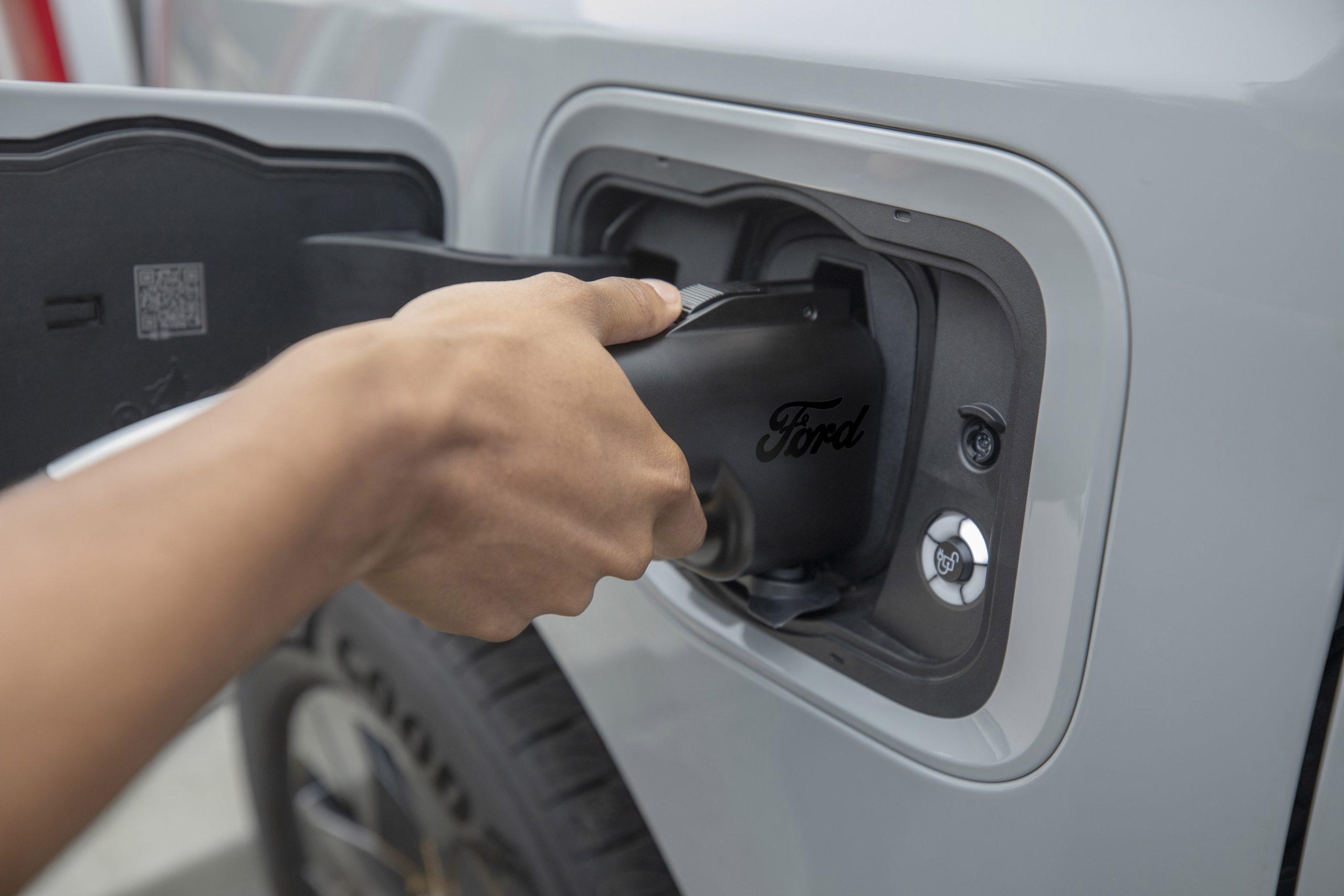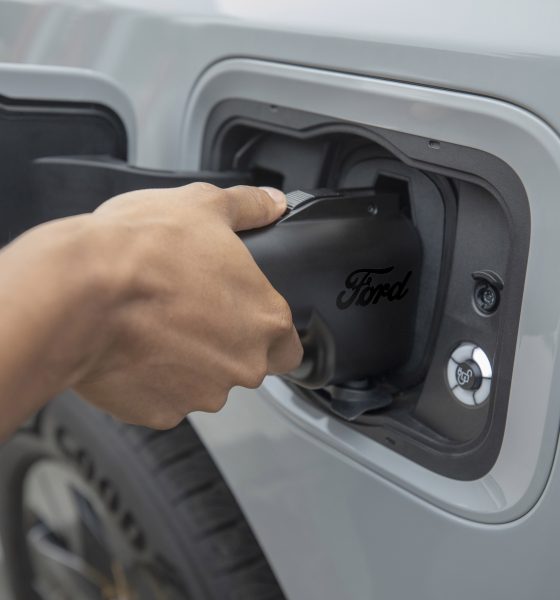As expected, the transition team for President-elect Donald Trump is now reportedly looking to slash support for electric vehicle (EV) and charging programs set up by the Biden administration, along with lodging global tariffs and pushing to ease regulations on fossil-fuel emissions.
The Trump transition team is now looking at plans to ease regulations on the fossil fuel industry and to cut many EV programs, including the $7,500 EV tax credit, along with lodging tariffs on battery material imports worldwide, according to a document seen by Reuters this week.
As part of efforts to bolster the domestic supply chain for battery materials, many of which are produced in China and are heavily subsidized in the U.S., the transition team has recommended imposing tariffs on all battery materials around the world, before negotiating individual exemptions with allies, as the document shows.
“When he takes office, President Trump will support the auto industry, allowing space for both gas-powered cars and electric vehicles,” said Karoline Leavitt, spokesperson for the Trump transition team, in a statement.
RELATED: U.S. Supreme Court to hear challenge on California emission rule waiver
Although Trump campaigned on promises to end the $7,500 federal EV credit and official plans to kill the subsidy were reported last month, the transition team has also called for rolling back the $7.5 billion plan passed under Biden to help aid the buildout of charging stations for EVs.
Instead, the team has said that it would shift this and other funding currently going toward making EVs more affordable toward national defense efforts, including the initiative to secure battery supplies without relying on China. The document notes that these efforts would focus on shifting money toward battery material production, as well as the “national defense supply chain and critical infrastructure.”
The document suggested that the team utilize Section 232 tariffs, which are intended to limit the import of any items related to potential national security threats. Biden recently increased tariffs on several imports related to charging technology and critical minerals for EV batteries, including graphite, “permanent magnets” used in EV motors and in military applications, and lithium-ion batteries, among others, though the tariffs were issued on economic grounds, rather than on those in national security.
The transition team is also looking to waive environmental reviews to accelerate “federally funded EV infrastructure projects,” such as those in battery production and recycling, charging deployment, and manufacturing of critical minerals. Other proposals detailed in the document include:
- Ditching federal requirements for electrifying government fleets, including Biden’s policy to mandate all federal purchases by zero-emission vehicles by the end of 2027
- Using the Export-Import Bank of the U.S. to provide financial support for U.S. batteries for EVs
- Utilizing tariffs as a “negotiating tool” to encourage other markets to consider U.S. auto exports including both gas cars and EVs
- Ending restrictions on exports of EV battery technology to countries deemed adversaries
- Ending programs for the Department of Defense attempting to buy or develop electric military vehicle options
How will ending the $7,500 EV tax credit affect Tesla? Musk calls it a benefit
While many have said that ditching the $7,500 tax credit and other policies intended to help spur on the adoption of EVs could hurt Tesla, CEO Elon Musk and others have argued that it may only benefit the company by harming other automakers even more. Wedbush analyst Dan Ives said last month that the change would only “enable Tesla to further fend off competition from Detroit,” given its already decisive advantage in EV scale.
In his latest statement regarding EV subsidies, made on X last month, Musk called for the U.S. to “end all government subsidies, including those for EVs, oil and gas.”
Musk also campaigned with Donald Trump during the election and created the political action committee (PAC), dubbed America PAC, to support his candidacy financially. He has since gained a position in what the team has called the Department of Government Efficiency, and he’s expected to play a major role in the upcoming administration.
In a report last week, it was said that the Trump transition team is also considering getting rid of a mandatory reporting measure for automated driving systems, as part of a larger effort to remove regulations and push self-driving vehicle development forward more quickly. An additional report from last month also suggests that Trump is already looking to create federal rules surrounding the rollout of autonomous vehicles, expected to accelerate the deployment of commercial robotaxis and other self-driving technologies.
What are your thoughts? Let me know at zach@teslarati.com, find me on X at @zacharyvisconti, or send us tips at tips@teslarati.com.
Analysts weigh in on Trump presidency’s effects to U.S. auto sector
Need accessories for your Tesla? Check out the Teslarati Marketplace:

News
Tesla FSD fleet is nearing 7 billion total miles, including 2.5 billion city miles
As can be seen on Tesla’s official FSD webpage, vehicles equipped with the system have now navigated over 6.99 billion miles.

Tesla’s Full Self-Driving (Supervised) fleet is closing in on almost 7 billion total miles driven, as per data posted by the company on its official FSD webpage.
These figures hint at the massive scale of data fueling Tesla’s rapid FSD improvements, which have been quite notable as of late.
FSD mileage milestones
As can be seen on Tesla’s official FSD webpage, vehicles equipped with the system have now navigated over 6.99 billion miles. Tesla owner and avid FSD tester Whole Mars Catalog also shared a screenshot indicating that from the nearly 7 billion miles traveled by the FSD fleet, more than 2.5 billion miles were driven inside cities.
City miles are particularly valuable for complex urban scenarios like unprotected turns, pedestrian interactions, and traffic lights. This is also the difference-maker for FSD, as only complex solutions, such as Waymo’s self-driving taxis, operate similarly on inner-city streets. And even then, incidents such as the San Francisco blackouts have proven challenging for sensor-rich vehicles like Waymos.
Tesla’s data edge
Tesla has a number of advantages in the autonomous vehicle sector, one of which is the size of its fleet and the number of vehicles training FSD on real-world roads. Tesla’s nearly 7 billion FSD miles then allow the company to roll out updates that make its vehicles behave like they are being driven by experienced drivers, even if they are operating on their own.
So notable are Tesla’s improvements to FSD that NVIDIA Director of Robotics Jim Fan, after experiencing FSD v14, noted that the system is the first AI that passes what he described as a “Physical Turing Test.”
“Despite knowing exactly how robot learning works, I still find it magical watching the steering wheel turn by itself. First it feels surreal, next it becomes routine. Then, like the smartphone, taking it away actively hurts. This is how humanity gets rewired and glued to god-like technologies,” Fan wrote in a post on X.
News
Tesla starts showing how FSD will change lives in Europe
Local officials tested the system on narrow country roads and were impressed by FSD’s smooth, human-like driving, with some calling the service a game-changer for everyday life in areas that are far from urban centers.

Tesla has launched Europe’s first public shuttle service using Full Self-Driving (Supervised) in the rural Eifelkreis Bitburg-Prüm region of Germany, demonstrating how the technology can restore independence and mobility for people who struggle with limited transport options.
Local officials tested the system on narrow country roads and were impressed by FSD’s smooth, human-like driving, with some calling the service a game-changer for everyday life in areas that are far from urban centers.
Officials see real impact on rural residents
Arzfeld Mayor Johannes Kuhl and District Administrator Andreas Kruppert personally tested the Tesla shuttle service. This allowed them to see just how well FSD navigated winding lanes and rural roads confidently. Kruppert said, “Autonomous driving sounds like science fiction to many, but we simply see here that it works totally well in rural regions too.” Kuhl, for his part, also noted that FSD “feels like a very experienced driver.”
The pilot complements the area’s “Citizen Bus” program, which provides on-demand rides for elderly residents who can no longer drive themselves. Tesla Europe shared a video of a demonstration of the service, highlighting how FSD gives people their freedom back, even in places where public transport is not as prevalent.
What the Ministry for Economic Affairs and Transport says
Rhineland-Palatinate’s Minister Daniela Schmitt supported the project, praising the collaboration that made this “first of its kind in Europe” possible. As per the ministry, the rural rollout for the service shows FSD’s potential beyond major cities, and it delivers tangible benefits like grocery runs, doctor visits, and social connections for isolated residents.
“Reliable and flexible mobility is especially vital in rural areas. With the launch of a shuttle service using self-driving vehicles (FSD supervised) by Tesla in the Eifelkreis Bitburg-Prüm, an innovative pilot project is now getting underway that complements local community bus services. It is the first project of its kind in Europe.
“The result is a real gain for rural mobility: greater accessibility, more flexibility and tangible benefits for everyday life. A strong signal for innovation, cooperation and future-oriented mobility beyond urban centers,” the ministry wrote in a LinkedIn post.
News
Tesla China quietly posts Robotaxi-related job listing
Tesla China is currently seeking a Low Voltage Electrical Engineer to work on circuit board design for the company’s autonomous vehicles.

Tesla has posted a new job listing in Shanghai explicitly tied to its Robotaxi program, fueling speculation that the company is preparing to launch its dedicated autonomous ride-hailing service in China.
As noted in the listing, Tesla China is currently seeking a Low Voltage Electrical Engineer to work on circuit board design for the company’s autonomous vehicles.
Robotaxi-specific role
The listing, which was shared on social media platform X by industry watcher @tslaming, suggested that Tesla China is looking to fill the role urgently. The job listing itself specifically mentions that the person hired for the role will be working on the Low Voltage Hardware team, which would design the circuit boards that would serve as the nervous system of the Robotaxi.
Key tasks for the role, as indicated in the job listing, include collaboration with PCB layout, firmware, mechanical, program management, and validation teams, among other responsibilities. The role is based in Shanghai.
China Robotaxi launch
China represents a massive potential market for robotaxis, with its dense urban centers and supportive policies in select cities. Tesla has limited permission to roll out FSD in the country, though despite this, its vehicles have been hailed as among the best in the market when it comes to autonomous features. So far, at least, it appears that China supports Tesla’s FSD and Robotaxi rollout.
This was hinted at in November, when Tesla brought the Cybercab to the 8th China International Import Expo (CIIE) in Shanghai, marking the first time that the autonomous two-seater was brought to the Asia-Pacific region. The vehicle, despite not having a release date in China, received a significant amount of interest among the event’s attendees.










